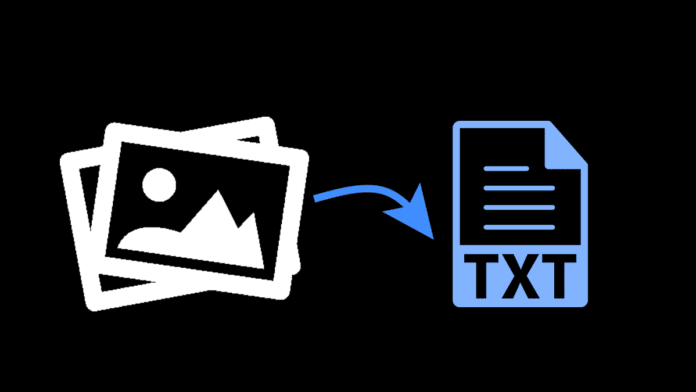Image-to-text technologies, specifically optical character recognition (OCR), are transforming how businesses work with visual content and print materials.
OCR enables the conversion of images (containing words) into searchable digital text, unlocking new levels of automation, integration, and insight.
As OCR continues to improve in accuracy and expand in capabilities, it empowers organizations across industries to enhance productivity, automate repetitive tasks, and gain a “second screen” on their visual data.
OCR is streamlining workflows, reducing costs, and transforming how companies leverage and analyze visual information. Read on as we tell you more about OCR and how this image-to-text technology increases productivity in various industries.
Table Of Contents
What Is Optical Character Recognition (OCR)?
OCR refers to the process of converting images of text into machine-encoded text. It works by analyzing visual features of text present in images using machine learning algorithms and converting them into text files that one can search, index, and edit using applications.
Specifically, here is the process by which OCR works:
- OCR software first detects the presence of text regions in the input image. It identifies text blocks, lines, and words.
- Once the software identifies text regions, it isolates individual characters. It analyzes visual features like stroke width, aspect ratio, and intersections to identify characters.
- After that, it maps the identified characters to its built-in dictionary. The system uses features to determine the probable match.
- Since the text is scanned and not explicitly typed, the OCR system has to handle ambiguities like distinguishing between similar characters (e.g., c and e) or noisy input. It uses statistical and language models to determine the most likely sequence of characters.
- The final output is a digital text document that users can search, index, edit, and format as required. Some OCR systems can also provide location information of each character to enable text re-extraction or correction.
OCR is useful, not just for businesses but individuals. You may have encountered OCR technology in the following scenarios:
- Converting scanned documents (receipts, letters, and books) into editable text
- Digitizing text from images on social media or the web for analysis
- Converting photos of text into text for searchability or translation
- Extracting data from forms or tables in PDFs or images
Types of OCR technologies
There are many different types of OCR technologies. They include the following:
- Desktop Software: Installed on individual PCs, used to convert small to moderate volumes of scanned documents (Adobe Acrobat and Nuance Power PDF)
- Web Services: Offered as an API service over the internet to convert images into text (Google OCR, Microsoft OCR, AWS Textract)
- Large-Scale Systems: Used by companies to digitize large volumes of documents using advanced features like zoning, segmentation, and document classification (Systems used by Google, Microsoft, and libraries)
- Neural Networks-Based Systems: Modern OCR systems using neural networks and deep learning to achieve significantly higher accuracy rates (Tesseract OCR and Cuneiform)
- Mobile Applications: Mobile devices and apps capable of converting text from real-world images on the go (Google Lens)
OCR Applications in Different Industries
OCR is an effective tool for many industries to streamline their operation and make work more efficient to boost productivity. Here are some of the sectors that are currently utilizing this technology for their benefit:
- Healthcare
OCR technology helps healthcare facilities digitize patient records, prescriptions, medical charts, and other documents. By converting paper documents into digital format, organizations can improve data storage, sharing, and security. Doctors and other medical professionals can easily search and access patient records, link medication information to electronic health records, and sensitive data remains private and HIPAA compliant.
- Legal
In law firms and courts, OCR enables the conversion of scanned documents like contracts, precedents, affidavits, and depositions into editable text format. Legal professionals can quickly search, analyze, annotate, and re-use information across different documents. OCR reduces the time spent on manual data entry and document organization and improves collaboration between legal teams.
- Retail
OCR solutions help retailers automate inventory management and enhance the customer experience. OCR can scan product barcodes and prices to update catalogs and track stock counts automatically. For customers, OCR enables self-service checkout by scanning items, receipts, and coupons on a mobile app or kiosk to skip long lines. OCR also simplifies returns and exchanges by directly comparing the scanned and tagged items against the original receipt.
- Banking and Finance
In the banking industry, OCR is crucial for processing high volumes of paper-based documents like checks, applications, statements, and contracts quickly and accurately. OCR converts these documents into a digital format to file, verify, approve, and archive them easily. Tools for check processing, form filling, and data extraction help speed up business processes, reduce errors, and ensure compliance with regulations. OCR also enables the automated tagging and classification of financial documents for fast retrieval.
Conclusion
Optical character recognition has tremendous potential to transform industries and optimize business productivity by converting visual content into digital text.
From healthcare to finance, OCR enables faster data processing, more accurate information retrieval, compliance, and better analytics across organizations.
As cameras, scanners, and networks advance, OCR will make more visual data accessible and actionable.
By integrating OCR into key workflows and systems, companies can unlock new insights, improve key metrics, deliver enhanced services, and gain a competitive edge in their industry.
However, software can only go so far. To convert image into text more accurately, contact a human-based provider like GoTranscript.

